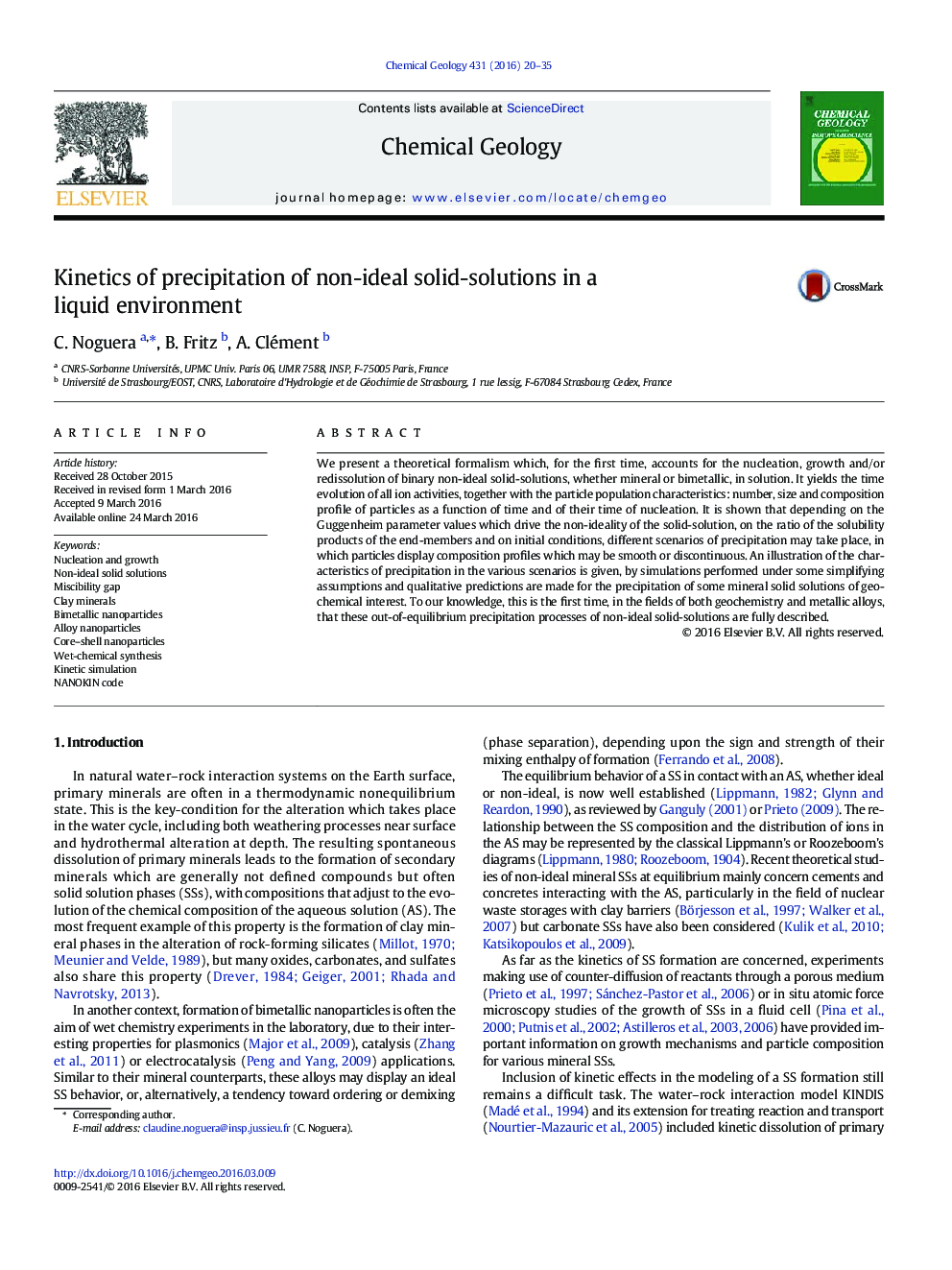| Article ID | Journal | Published Year | Pages | File Type |
|---|---|---|---|---|
| 4698286 | Chemical Geology | 2016 | 16 Pages |
•Theoretical and numerical model for out-of-equilibrium precipitation of non-ideal solid solutions in a liquid medium.•For the first time, nucleation, growth and/or redissolution processes are fully described.•Particle size distribution functions and composition profiles are obtained.•The formalism applies to mineral A1 - xBxC as well as bimetallic A1 - xBx nanoparticle formation.•Four scenarios are predicted, and discussed for mineral solid solutions of geochemical interest.
We present a theoretical formalism which, for the first time, accounts for the nucleation, growth and/or redissolution of binary non-ideal solid-solutions, whether mineral or bimetallic, in solution. It yields the time evolution of all ion activities, together with the particle population characteristics: number, size and composition profile of particles as a function of time and of their time of nucleation. It is shown that depending on the Guggenheim parameter values which drive the non-ideality of the solid-solution, on the ratio of the solubility products of the end-members and on initial conditions, different scenarios of precipitation may take place, in which particles display composition profiles which may be smooth or discontinuous. An illustration of the characteristics of precipitation in the various scenarios is given, by simulations performed under some simplifying assumptions and qualitative predictions are made for the precipitation of some mineral solid solutions of geochemical interest. To our knowledge, this is the first time, in the fields of both geochemistry and metallic alloys, that these out-of-equilibrium precipitation processes of non-ideal solid-solutions are fully described.
